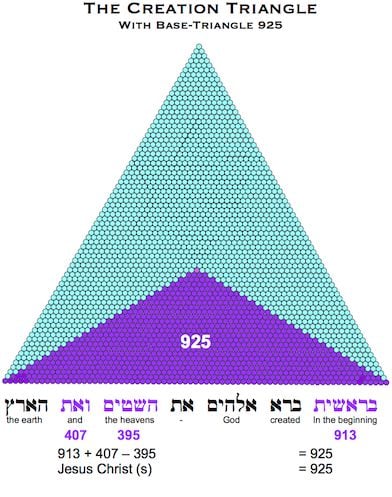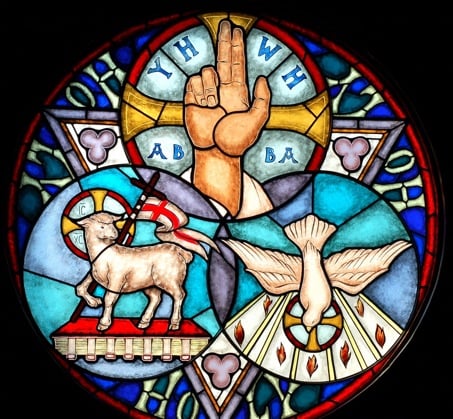Euler's Constant
Introduction
Leonhard Euler (1707 - 1783) was a Swiss polymath and the most accomplished mathematician of the 18th Century, producing fully one third of all the published mathematics of that Century, founding the disciplines of graph theory and topology and making huge contributions in many other areas of mathematics, physics, astronomy, optics and music theory. He created much of modern mathematical terminology, introducing the modern notation f(x) for functions and the symbols, pi, e and i, which come together in his beautiful equation, known as Euler's identity.[1]
e^(ipi) + 1 = 0
Euler discovered a constant he named gamma (y), which is found in many areas of mathematics, such as the Riemann Zeta function, harmonic series and the gamma function. Interestingly, given the triangular setting within which it is found in G1.1, gamma emerges from analyses of the triangular numbers. It is defined as follows:
y = lim (1+1/2+1/3+1/4+ . . . +1/n) - ln(n)
= 0.577215664. . . . . [2]
Gamma has been called the third most important mathematical constant after pi and e. This constant appears in Genesis 1.1 (BHS) in a way that links it to the concepts of the Trinity and to Jesus Christ, both as the Creator and as the man who bore our sins on the Cross, to replace the annual Rite of Atonement. The encoding is also connected to the geometry of Genesis 1.1 and the concept of the Trinity.
Interestingly, I found the encoding on 15/4/25, the date on which Euler was born 318 years ago.
The Derivation from Genesis 1.1
Conversion of the Hebrew Bible's original words into numbers, via historically-attested systems of alphabetic enumeration, reveals it to be a fractally compressed database of immense sophistication.[3] In particular, the standard values of the 28 letters comprising Genesis 1.1, unchanged since at least the time of Christ, contain a seemingly limitless storehouse of information, including fundamental mathematics, much of it unknown when these letters were penned. [4]
For example, the standard value of Genesis 1.1 is 2701, which is the 73rd triangular number, known as the Creation Triangle. Five of the individual word values sum to 1801, which is the largest centred hexagon that will fit inside.

The hexagon is also formed by the self-reflection of the triangle, which, like every third triangular number, contains a central counter around which is can reflect and is dubbed a G-triangle (generator triangle). The Star of David thereby created has 3601 counters, with hexagon 1801 inside, and is the first iteration of a Koch snowflake.
The three words in blue above, which use nine Hebrew letters, sum to 900 (203 + 401 + 296), displayed as three triangles of 300 counters around the central hexagon. 300 itself is the standard value of the Hebrew name Ruach Elohim/The Spirit of God. So the number three and a connection with Divinity and therefore the Christian concept of the Trinity are strongly implied here in the triangular forms, the three triangles of 300 counters, the word and letter counts and the above identity.
This is the numerical and geometric setting for Euler's constant, which is extracted by a simple, two-step procedure.
1. Dividing the standard values of the three words by that of the entire verse, we have
900/2701 = 0.3332099. . . .
2. Taking the square root of the result gives an accurate approximation of Euler's constant.
(0.3332099. . . )^0.5 = 0.577243382. . . .
This is in error of the true value shown earlier (0.557215664. . . .) by only 1 part in 20800. It is slightly less accurate than the encoding of pi in Genesis 1.1, which is accurate to 1 part in 82,000. However, the pi encoding is multiplied by 10^17. This time there are no zeros to ignore.
Gamma and Jesus Christ
Gamma itself is even more accurately approximated by this fraction, again using 2701 as the denominator.
1559/2791 = 0.577193632. . . .
which is in error of the true value by only 1 part in 26000.
1559 is of particular interest in the context of the New Bible Code, which is based on the English language NIV Bible. One title for Jesus Christ, found in 1 Thess. 5.23, is this one, with standard value 1559.
Our Lord Jesus Christ (s) = 1559
We can express this in the following way:
Our Lord Jesus Christ (s)/Genesis 1.1 (s) = gamma
The Three Words in Genesis
The three words in Genesis (coloured blue below) summing to 900 are in positions 2, 4 and 7, implying 247.

This is the standard value of one of three Greek words for 'beast' used in Revelation
Therion/beast (s) = 247
In this page and this video, I show my geometric solution to the riddle of Revelation 13.18. Jesus Christ was 'numbered with the transgressors' and became our atonement substitute, his death on the Cross replacing athe annual Rite of Atonement, when five beasts were sacrificed by the high priest of the Israelites for the sins of the people. Jesus was, then, the beast of Revelation (and also our High Priest). This identification is depicted in a remarkable construction involving the Creation Triangle.
First, the standard value of The English name 'Jesus Christ' is the number of counters in an isoceles triangle proceeding from the central counter in the Creation Triangle to its base [5] Note that 925 can be derived from the word values.

Secondly, the last two words of the verse 'and the earth', sum to 703, which can be placed in the centre of the Creation Triangle to give this remarkable construction, which is supported by the identities shown and which show Jesus Christ seen as the beast from an earthly perspective..

Words 2, 4 and 7 have three, two and four letters, giving 324. 324 is another reference to Jesus, this time as the ark. [6]
The Ark (s) = 324
Gamma and Pi
Vernon Jenkins found that the product of the letter values in G1.1, divided by the product of the word values in G1.1 encoded pi/4. Peter Bleuer improved this result by including the numbers of letters and words, giving pi x 10^17, with an error of only 1 in 82,000. If we sum the encoded approximations of gamma and pi we obtain an improved estimate of the combined number.
pi = 3.141592653. . . .
pi (est.) = 3.141554509. . . ., error 1 in 82,000
y = 0.577215664. . . .
y (est.) = 0.577243382. . . ., error 1 in 20800
pi + y = 3.71880831. . . .
pi + y (est.) = 3.71879789. . . . error 1 in 357,000
This is not quite as impressive as the reducion obtained when pi and e as encoded in G1.1 and J1.1, are summed (to 1 in 800,000), but it is impressive nonetheless. As with pi and e, one is an overestimate, the other an underestimate, but the reducion in error is better than would be expected by chance.
Summary
Gamma, a fundamental mathematical constant discovered by perhaps the greatest, most productive mathematician who ever lived, appears to be encoded as its square in a geometric setting within the opening verse of Genesis, the inexhaustible storehouse from which so much spiritual nourishment has already been taken. Yet again the Bible is shown too be founded not on the shifting sands of man's hopes, fears and prejudices but on the solid rock of mathematical truth, into which is chiselled the name Jesus Christ.
Bill Downie 16/4/25
Notes
1. https://en.wikipedia.org/wiki/Leonhard_Euler
2. An unsolved problem in number theory is whether or not gamma is an irrational number and beyond that, a transcendental number.
3. This is also true of at least some verses in the Greek New Testament (Textus Receptus) and of the entire 1984 NIV Bible. The encoding of these scriptures was an ongoing phenomenon, transcending time, place and language.
4. This is known from a fragment of the Dead Sea Scrolls, which contains the precise lettering found in the modern Biblia Hebraica Stuttgartensis, via the Masoretic Text.
5. 925 is also a pentagonal number and a regular trapezium.
6. Reading backwards we have 423, which is The Son (s). Mirror codes are well establshed in my own work and that of other researchers.
